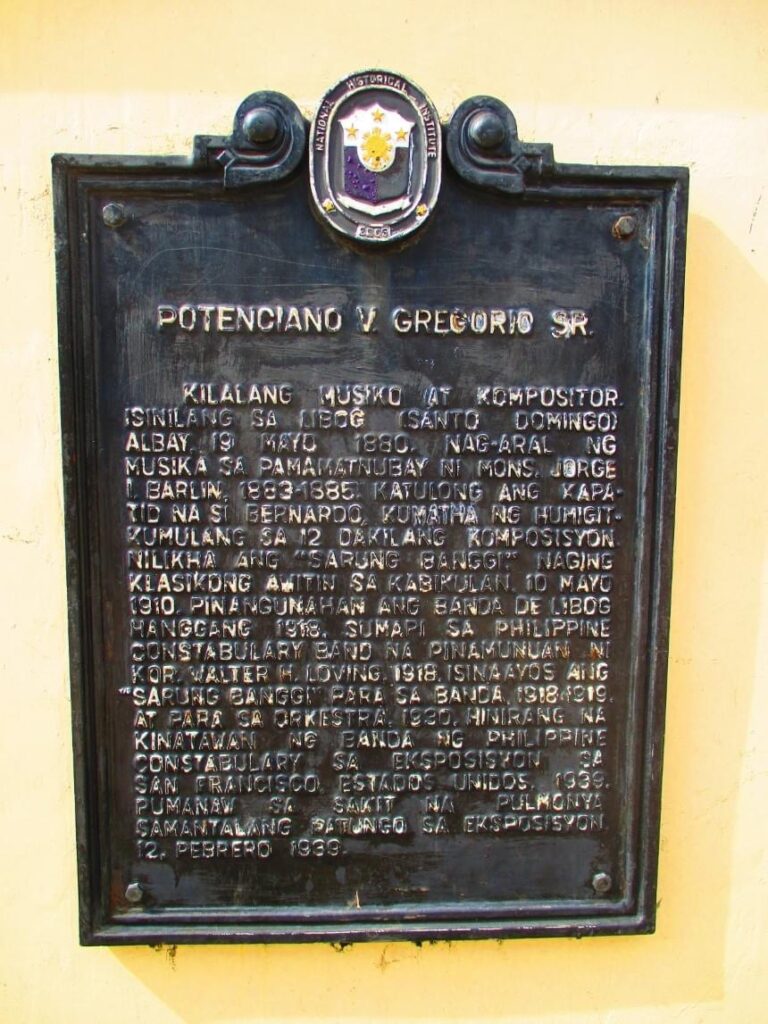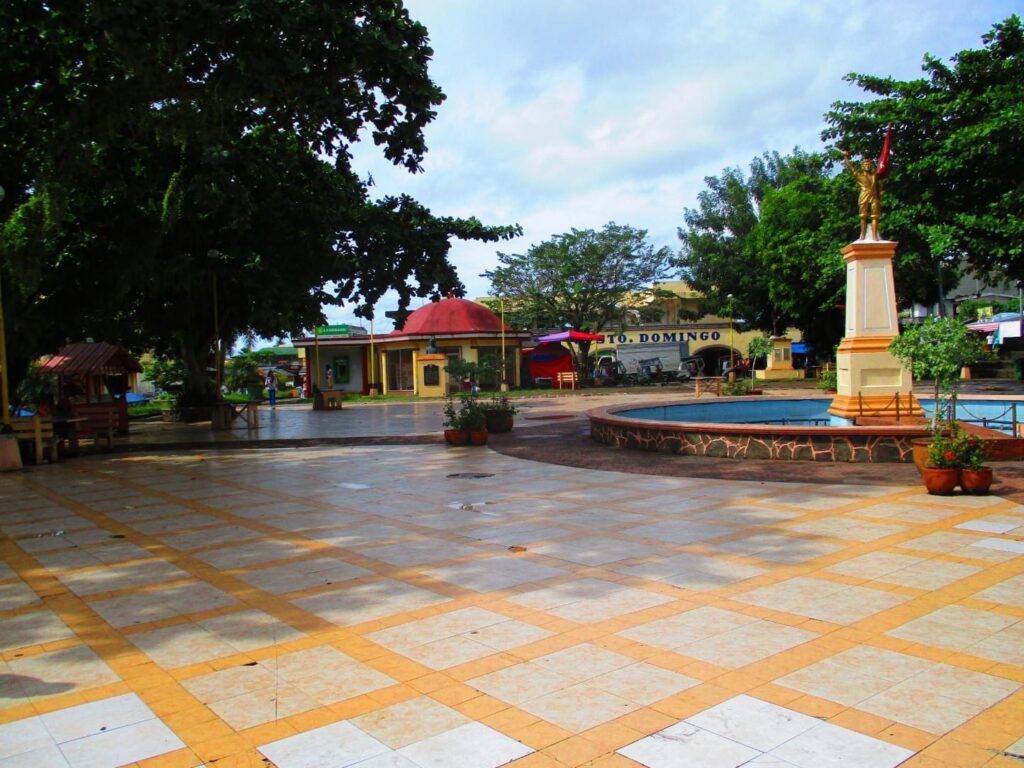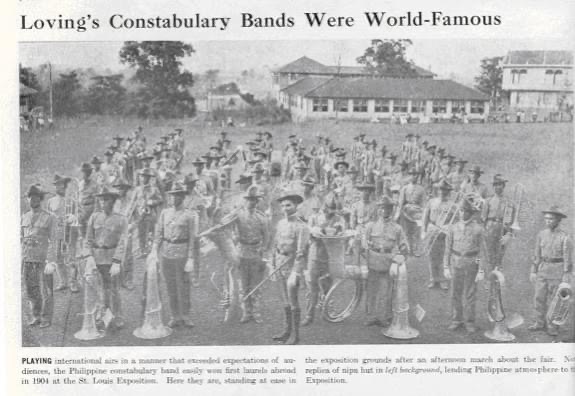By Raffi Banzuela
The complete lyrics of “Sarong Banggi”
Potenciano V. Gregorio
(1880-1939)
Sarong banggi
Sa higdaan
Nakadangog ako
Hinoni nin sarong gamgam
Sa luba ko katurogan
Bako kundi simong boses iyo palan.
Dagos ako bangon
Su sakuyang mata
Iminuklat
Kadtong kadikloman
Ako nangalagkalag
Kasu iheling ko su sakuyang mata
Paitaas,
Simong lawog
Naheling ko maliwanag.
Kadtong kadikloman
Kan maheling ta ka
Mamundu kong puso
Tolos na nag-ogma.
Minsan di nahaloy
Idtong napagmasdan
Sagkod nuarin pa man
Dai ko malilingawan.
Magpuun na ika
Sakuyang namo’tan
Ako nakamate
Nin kaginhawahan.
Pati an puso kong
Tagub kapungawan
Ngunyan burabod na
Nin tunay na kaogmahan.
Sarong Banggi is a quintessential Bikolano love song passionately capturing and eloquently expressing hope, yearning, and admiration.
It is evocative of a distinctive tenderness in the Bikolano soul, a kind of constancy in his character.
Sarong Banggi was composed in 1910.
On August 15 of that same year, it got publicly played during the town fiesta of Guinobatan town in Albay by a band or singer whose identity people and time appear to have conveniently forgotten.
Soon enough it became a favorite of local serenaders. Then it assumed the status of a folksong. Today Sarong Banggi is emblematic of Bikol and of Bikolanos, of enduring love and constant hope.
While the song soared into popularity and public patronage, its composer, Potenciano Valladolid Gregorio Sr., remained virtually unknown and unrecognized for over 60 years.
Of those 60 years, 39 could be counted after he died.
His obscurity led to claims that the song was composed by a nameless someone. There too were attempts at usurping the authorship of what is now a Bikolano treasure.
Only those close to or who know Tió Poten or Lolo Poten, as he was popularly known in his hometown, acknowledge Sarong Banggi’s real authorship.
Lolo Poten was about 30 years old when he composed Sarong Banggi. He was the younger of the two children of Narciso Gregorio and Canuta Valladolid. In some narratives, his middle initial would be B for “Balladolid” which should rightly be “Valladolid.” He was born in the town of Lîbog, Albay, now Sto. Domingo, where the parish records include that of Lolo Poten’s birthdate, May 19, 1880, and baptism, May 22, 1880. He was married to Dominga Martinez Duran with whom he had seven children—Salvador, Victoria, Narciso, Eriberto, Encarnacion, Monico, and Potenciano Jr.
He died on February 12, 1939.
THE FAMILY OF POTENCIANO V. GREGORIO
In 1962, only four of the children were known to have survived the family.
Victoria lived in Cebu.
Narciso was in Makati, Rizal.
Eriberto stayed in Sta. Ana, Manila.
Monico went to Pasay City.

Potenciano V. Gregorio was a violin prodigy at the age of three. His first music teacher was Fr. Jorge I. Barlin who was then the parish priest of Lîbog from 1883-1885.
Fr. Barlin (April 23, 1850 – September 4, 1909) holds the distinction of being the first Filipino priest to become a Bishop during the Spanish colonial period.
As he grew older he wrote music for the town church in collaboration with his older brother, Bernardo. Eventually, he became the band leader of Banda de Lîbog until he was 39 years old when he joined the Philippine Constabulary Band in 1919.
Lolo Poten is said to have written three major compositions, Sarong Banggi included, and religious compositions done in collaboration with Bernardo.
It was Lolo Poten’s close friend Judge Albert Somerselle of Daraga, Albay who suggested that he join the world-famous Philippine Constabulary Band under the baton of Col. Walter Howard Loving.
He considered the idea and went to Manila for interview and audition. He was challenged to show what he can do. He played almost all of the musical instruments in the band. Then he got hold of a banduria and played Sarong Banggi. And played Sarong Banggi again on the piano. In 1919 Sarong Banggi was unheard of outside of the Bikol Region.
He prepared a score for Sarong Banggi for the band which played it several times in 1920. It became very popular and would be played again and again by popular request during the much anticipated Sunday afternoon public concerts in the Luneta until World War II put an end to that enjoyable weekend treat.
Together with Antonino Buenaventura, who would later become a National Artist for Music, Lolo Poten benefitted enormously from the tutelage of Col. Walter Howard Loving. His talent did not go unrecognized.
He was selected to be among those who would compete with other musicians worldwide at the Golden Gate International Exposition in the USA in 1938.
Unfortunately, while aboard the S.S. President Pierce on the way to Honolulu, he was downed by pneumonia. He was rushed to the Fort Shafter Hospital in Honolulu but he died shortly after arrival.
His remains were brought back to the Philippines and interred at the La Loma Cemetery in Manila. He held the rank of Corporal in the Philippine Constabulary Band.
DOUBTS ON AUTHORSHIP OF SARONG BANGGI CLEARED
The doubts on the authorship of Sarong Banggi was cleared by Justo B. Gregorio, then 73 years old, a nephew of Lolo Poten.
It was intended for Dominga Duran who would become his wife. Shortly before his death, Lolo Poten sold his rights to the song to the defunct Ilaya Music Publishers of Manila for P1,000.00.
Sarong Banggi was publicly performed in Lîbog for the first time, on the first Sunday of October 1917 during its town fiesta, seven years after it was first heard in Guinobatan.
After World War II, the song became popular even more but its composer faded into oblivion. The younger generation seem to have forgotten him.
In 1957 the people of Lîbog decided to change the town’s name due its spelling, pronunciation, meaning, and confusion with a Tagalog word similarly spelled but with different pronunciation and meaning.
Then Municipal Mayor Hilario B. Balilo proposed Sarong Banggi to be the town’s new name. The proposal lost out to Sto. Domingo, the town’s present name.
On January 22, 1963, Sol H. Gwekoh in his Hall of Fame column in the Manila Times featured Potenciano V. Gregorio Sr. as among the country’s illustrious sons.
In 1966, Sarong Banggi was chosen as the theme song by the United Nations on its 20th anniversary, recorded on newsreel for world-wide release.
On February 14, 1975 Potenciano V. Gregorio Sr. was memorialized and immortalized in his hometown. 36 years after his death.




On May 19, 1975, a Sarong Banggi Park and Open Air Amphitheatre was established in the Albay Constabulary Parade Grounds, now Camp Simeon A. Ola.
SOME THINGS ABOUT LOVING

Walter Howard Loving was born to former African-American slaves in Lovingston, Virginia in December 1872.
In June 1893, he enlisted in the U.S. Army and was assigned to the 24th Infantry regiment because he indicated his occupation as musician.
In 1898 Loving was sent to the Philippines as a band member of the 48th Volunteer Infantry. The band served as morale booster for the American troops in the Philippines.


In May 1901, the 48th regiment returned to United States for redeployment to reduce the U.S. Army’s strength in the islands by 40 percent. Shortly after its return, members of the 48th Volunteer Infantry where Loving was assigned returned to civilian life.
Loving decided to return to the Philippines because of America’s animosities towards the colored race.
In 1902, Loving returned to the Philippines and worked as a subinspector in the Philippine Constabulary.
At the request of William Howard Taft, first Philippine Governor-General, Loving started work in organizing a Constabulary band. He was promoted to second lieutenant in the end of 1902 then to first lieutenant in August 1903.


During his stay in the Philippines, Lt. Loving became fluent in Spanish and Tagalog which became helpful in searching for first class Filipino musicians.
It was believed that Col. Loving retired from service when World War II began.
In early 1942, the Japanese occupied Manila and interned a few thousand American, British and other foreign nationals in the grounds of Santo Tomas University in Manila. Among those who were interned were the Loving family.
When the American forces returned to the Philippines in early 1945, thousands of Japanese troops decided to fight till death on the streets and buildings of Manila.
The Loving family tried to escape by running towards the shores of Manila Bay but a Japanese soldier separated Col. Loving and his wife.
It was believed that Col. Loving was beheaded by the Japanese at Rizal Park, which was the same place where he led his band on his farewell concert years earlier.
